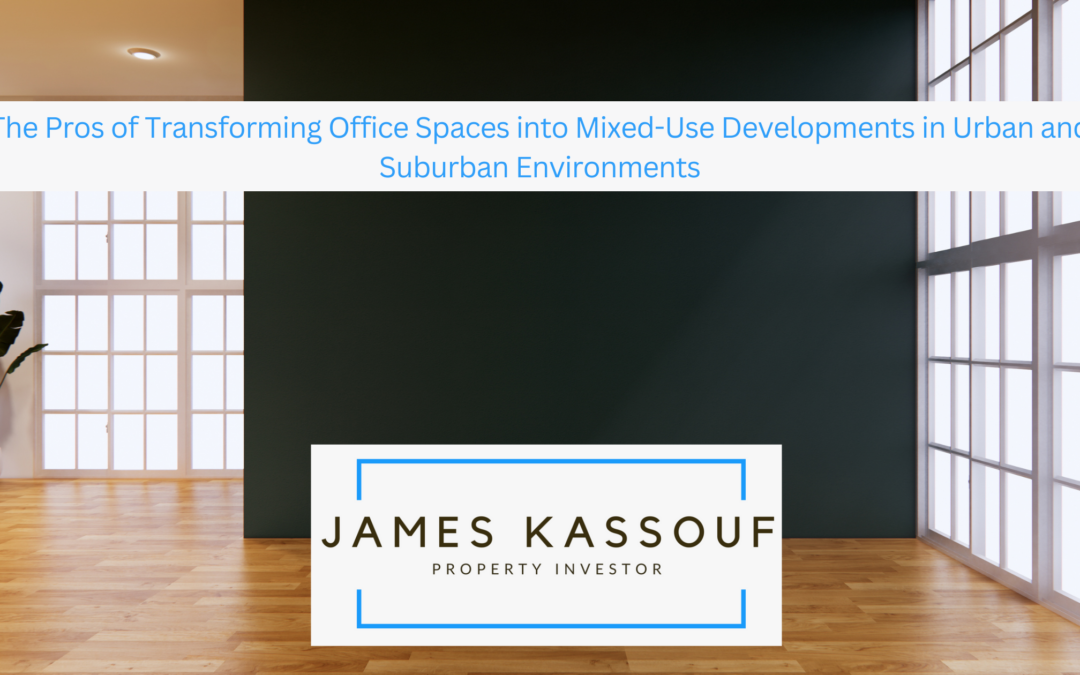As the way we live and work continues to evolve, the transformation of traditional office spaces into mixed-use developments is gaining traction. This innovative approach benefits urban and suburban environments, fostering dynamic, integrated, and sustainable communities. Let’s explore the pros of this transformative trend:
- Maximizing Space Utilization: Converting office spaces into mixed-use developments maximizes the utilization of available space. These developments create multifunctional hubs that cater to diverse needs within the same footprint by integrating residential, commercial, and recreational elements. This efficient use of space contributes to urban and suburban density while promoting sustainability.
- Creating Vibrant Urban and Suburban Hubs: Mixed-use developments inject vibrancy into urban and suburban landscapes. Formerly static office parks or underutilized urban areas transform into lively, 24/7 environments. The coexistence of residences, offices, retail outlets, and recreational spaces fosters a sense of community and ensures that these areas remain active throughout the day and evening.
- Supporting Sustainable Practices: The adaptive reuse of existing office spaces aligns with sustainable urban development principles. By repurposing structures rather than embarking on new construction, these developments reduce the environmental impact of materials, energy consumption, and waste generation. Sustainable practices, such as energy-efficient building upgrades and green spaces, contribute to environmentally friendly urban and suburban living.
- Enhancing Walkability and Accessibility: Mixed-use developments prioritize walkability and accessibility. By clustering various amenities within proximity, residents can easily navigate the area on foot or by bicycle. This emphasis on pedestrian-friendly design promotes a healthier lifestyle and reduces traffic congestion and reliance on personal vehicles, improving air quality.
- Catering to Diverse Lifestyles: Integrating residential, commercial, and recreational spaces accommodates diverse lifestyles. Residents can live and work in the same vicinity, fostering a live-work-play environment. This flexibility aligns with the evolving trends in remote work and the desire for convenient access to amenities, allowing individuals to tailor their lifestyles to their preferences.
- Attracting a Range of Demographics: Mixed-use developments appeal to a broad demographic spectrum. The availability of various housing options, from apartments to townhouses, caters to individuals, families, and empty nesters alike. This inclusivity enhances the diversity and vibrancy of the community, creating a dynamic mix of residents and contributing to a sense of shared experience.
- Economic Revitalization: Transforming office spaces into mixed-use developments often brings economic revitalization. These developments stimulate local economies by attracting residents, businesses, and visitors. Retail establishments, restaurants, and cultural venues enhance the area’s appeal, potentially increasing property values and attracting further investment.

